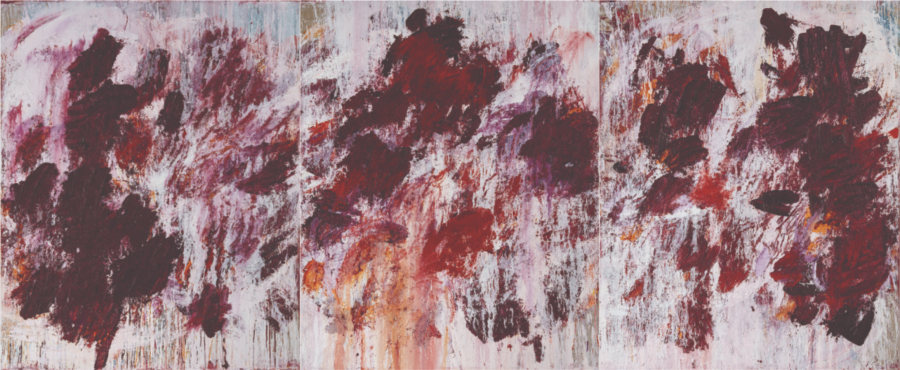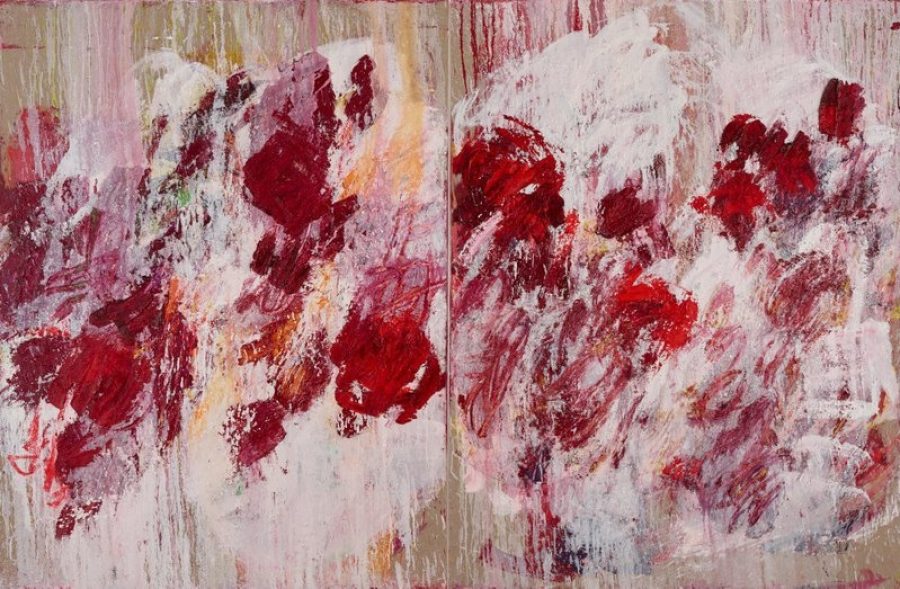

Aida Tomescu was born in 1955 in Bucharest amidst the post-war turbulence of the Socialist Republic of Romania. Tomescu had already completed a Diploma in Visual Arts in 1977 in Bucharest prior to emigrating to Australia in 1980. After arriving in Sydney, she completed a Post Graduate Diploma in 1083 and began to re-cultivate her artistic practice, one that would draw on her experience of the diaspora but critically upon the new ground offered by her new beginnings in Australia.
Shifts in Tomescu's practice were explored through painting, drawing and collage and a move away from representation to the development of an abstract visual language. The fluidity of a more open language allowed her to expand her painting practice, and indeed the increasing scale would in turn, facilitate a greater concentration of content (Stranger, 2021). This new language removed all representation of representational study and evolved, in Tomescu's words, "by necessity" toward abstraction (as quoted in Hammond, 2021, p.14).
At first glance, viewers may be inclined to invest too heavily into Tomescu's mark-making, texture and bold, burgeoning blooms of colour evident in works such as, In the Crown of Broken April 2020, a painting that takes its title from a verse by Australian writer Thomas Bernhard. We experience deep Cobalt violet, maroons, and crimson reds working in unexpected synchronocisty. Resting on gradual transitions of pinks, orange and yellows, and working in concert with the contrasting films of white pigment — pigment that also builds form, edits and modifies 'identities' throughout the work.
Increasingly, areas of raw linen remain exposed, asserting the painting's ground and expanding the spatial implications and opportunities to further build form. This openness has become integral to the work's structure and the content, so much so that they become interwoven notions — identities.
For Tomescu, the painting process, as both painter and viewer, fundamentally invites the making of connections — of finding new relationships and identities. Tomescu remarks, 'Painting is a form of thinking and questioning canvas. It leads to gradually finding answers, and clarity of direction (often born from multiple sources), a fullness and ultimately the unity and resolution of the work' (A. Tomescu, personal communication, August 2022).
In his publication Book of Embraces (1922), Eduardo Galeano speaks of creativity as sentipensante, 'feeling-thinking'. It is a process that gradually reduces 'the distance between thinking and the doing', Tomescu says. The compression of this space between thinking and doing might be mischaracterised as intuition, but Tomescu is careful to distinguish the more romantic notion from the kind of weaving of thought and action that are evident in the painters she has intimately studied time and again — from Giotto through to Titan and Cezanne.
Encountering an Aida Tomescu painting compels us to look, to explore and reflect. Experiencing her work over time, we begin to sense something of the complexities of its making, to register the subtle areas where shifts of colour and more discreet transitions "often hold the painting together" (A. Tomescu, personal communication August 2022). A structural space that invites us to participate.
Laura Brinin
Images:
STRONG Exhibition catalogue
spring oil on linen, 200.5 x 307 cm
In the Crown of Broken April 2020, oil on Belgian linen, 190 x 460 cm